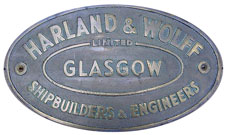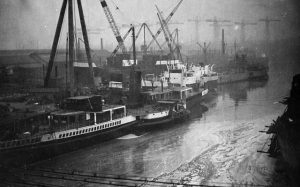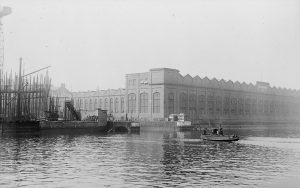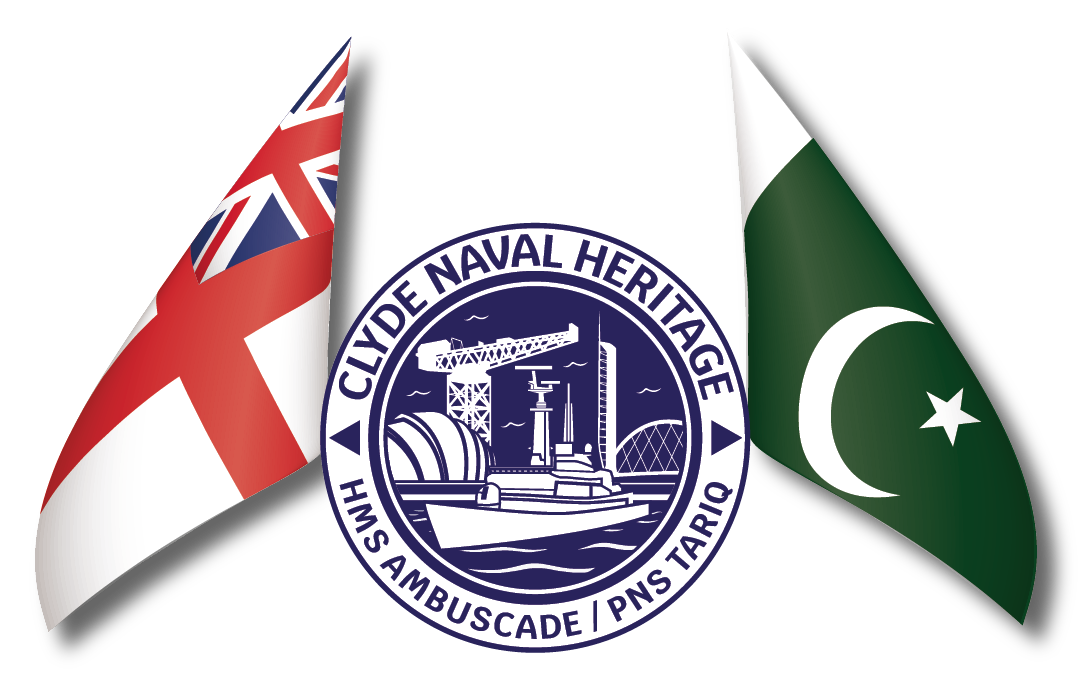Harland and Wolff, Govan Division
Establishment of Harland and Wolff in Belfast (1861)
The roots of Harland and Wolff trace back to Belfast, where the company was founded in 1861 by Edward Harland and Gustav Wolff. Based on the River Lagan in Northern Ireland, Harland and Wolff grew to become one of the most prominent shipbuilders in the world, with notable projects including the construction of the famous RMS Titanic. The firm quickly built a reputation for constructing large and luxurious ocean liners, which allowed it to expand its operations and become a dominant player in the global shipbuilding industry.
Harland and Wolff’s Expansion into Govan (1912-1913)
As demand for larger ships grew, Harland and Wolff sought to expand its capacity and geographic reach. In 1912-1913, the company purchased the Govan-based shipyards of the Naval Construction Yard, which had previously been under the ownership of Mackie & Thomson, a Scottish shipbuilding firm. The acquisition of this Govan yard marked a significant milestone in Harland and Wolff’s history, allowing the company to strengthen its operations on the River Clyde and take advantage of Scotland’s rich shipbuilding tradition.
This strategic acquisition came at a time when the global demand for warships and merchant vessels was increasing, partly in response to rising geopolitical tensions that would soon culminate in World War I. By establishing itself in Govan, Harland and Wolff aimed to tap into the expertise of the local shipbuilding workforce while expanding its production capacity for naval contracts.

World War I and Post-War Boom (1914-1930s)
During World War I, the Govan division of Harland and Wolff contributed significantly to the war effort by constructing military vessels for the Royal Navy. The workforce at the Govan yard, bolstered by the company’s investment in new facilities and technologies, produced a range of vessels including destroyers, cruisers, and support ships. The war brought prosperity to the shipbuilding industry, and Harland and Wolff’s Govan yard thrived in this period of high demand.
After the war, the global shipbuilding industry experienced a boom, fuelled by the need to replace vessels lost during the conflict and to modernize commercial fleets. Harland and Wolff’s Govan yard benefited from this resurgence in demand and continued to build both commercial and military vessels throughout the 1920s and 1930s. However, as the Great Depression took hold in the late 1920s and early 1930s, global demand for new ships began to decline. This economic downturn would pose challenges for the industry in the years to come.
World War II and Peak Production (1939-1945)
The outbreak of World War II in 1939 once again saw Harland and Wolff’s Govan yard ramp up its production of military vessels. The yard played a critical role in the war effort, contributing to the construction of a variety of naval ships, including destroyers, frigates, and aircraft carriers. During the war, shipbuilding across the River Clyde reached unprecedented levels, and Govan’s contribution was essential to maintaining the strength of the British Navy.
The workforce at the Govan yard expanded dramatically during this period, and women played an increasingly important role in shipbuilding as men were called up to fight. The Govan division’s ability to adapt to wartime demands and innovate in ship design and production helped secure its position as one of the leading shipyards in the United Kingdom.

Post-War Decline and Nationalization (1945-1977)
After the end of World War II, the shipbuilding industry faced significant challenges. The global demand for new ships declined as post-war reconstruction efforts took priority, and increased competition from foreign shipbuilders began to erode the dominance of the British shipyards. In Govan, Harland and Wolff experienced a decline in orders and profits, mirroring broader trends across the Clyde.
By the 1960s, the British government had become concerned about the future of the shipbuilding industry and began to intervene. In 1977, the Labour government of the United Kingdom nationalized several key shipyards, including Harland and Wolff’s Govan division, as part of a broader effort to protect the industry from collapse. The nationalization saw Govan incorporated into the newly formed British Shipbuilders Corporation, which aimed to streamline production and improve the competitiveness of British shipyards.
Privatization and Struggles in the Late 20th Century (1980s-1990s)
The nationalized Govan yard, under the British Shipbuilders Corporation, continued to face stiff competition from international shipyards, particularly those in East Asia, where labour costs were lower and modern facilities allowed for greater efficiency. In the 1980s, the Conservative government led by Margaret Thatcher embarked on a program of privatization, and Govan was once again returned to private ownership.
Despite the return to private control, Govan, like many shipyards across the UK, struggled to remain competitive. The yard continued to produce naval ships for the Royal Navy, but commercial shipbuilding declined. By the 1990s, the shipbuilding industry on the Clyde, once a symbol of British industrial power, was a shadow of its former self.

Govan Shipyard’s Revival as BAE Systems (2000s-Present)
In the early 2000s, the shipyard at Govan underwent another transformation when it was taken over by BAE Systems, one of the world’s largest defence contractors. Under BAE Systems’ ownership, the Govan yard focused primarily on naval shipbuilding, producing vessels for the Royal Navy as part of large-scale defence contracts. Notably, Govan played a key role in the construction of the Queen Elizabeth-class aircraft carriers, a project that marked one of the largest shipbuilding endeavours in British history.
Today, the Govan yard continues to operate as part of BAE Systems’ Maritime division, contributing to projects such as the construction of frigates and other naval vessels. The site, although much reduced in size and capacity compared to its heyday, remains an important part of the Clyde shipbuilding legacy and a symbol of the resilience of the British shipbuilding industry.

